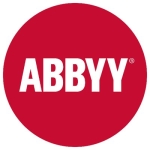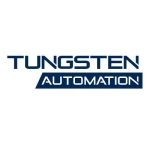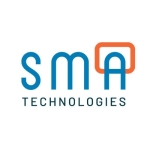What is our primary use case?
I am a software developer and I am a full-time RPA developer for my company. We create automation for internal purposes as well as for our clients.
I have implemented 15 to 16 processes end-to-end that cover use cases including Excel, front-end web-based applications, backend Windows applications, and sometimes Citrix. I have also done some Adobe Flash Player automation.
The REFramework (Enhanced Robotic Enterprise Framework) is what we use for most of our use cases.
We are using Studio for development on-premises and we use Orchestrator in the cloud.
How has it helped my organization?
UiPath has helped to improve our organization in several ways. Prior to UiPath, the company was using legacy methods of automation. These were time-consuming and required that more code be written. With the ease of use and speed at which automations can be developed using UiPath, the company is bringing on new clients and therefore, more business.
UiPath and the automations that we create help us to better utilize our resources. For example, a manual task that used to take between seven and eight days can be completed in one or two days with automation.
This product is bringing new clients to the business and nowadays, all of our clients require something to be done in the domain of robotic process automation.
With respect to ease of use and building automations, UiPath is very good. I would rate them at least a four out of five in that regard, especially when compared to other products on the market. The ease of building automations makes them quick to create and it can be accomplished by people in the business sector.
UiPath enables and helps us to create end-to-end automations, and it divides all of the subtasks up in a good way. For example, monitoring processes is different from developing code, and each of these is separated such that they are independent, but we can link them together for the benefit of the process. This is important because I am a complete process developer, so having all of the different subtasks available in one tool allows me to best develop automation for our clients.
This solution has helped to decrease our time to value, which is something that is evident when you look at the automation we were doing previously. Our technologies included Python, VBScript, and other ways. These approaches took more time to develop and are a little bit more complex. With the help of this tool, it takes less time to build the same automation. It allows us to focus on building the logic and algorithms, without having to deep-dive into things like syntax. By allowing us to focus on the business logic for each process, it leads to significant time savings.
We use the attended automation feature and it helps us when it comes to tasks that require interaction between user and application, such as the necessity to enter credentials. It is quite helpful, in particular for BPM processes, and this is something that is important to us. The typical case is when somebody is doing repetitive work as part of their task. In other words, they are working on one task, and the bot is working beside them but needs the occasional input from the user. In these processes, the bot is doing 80% of the work and the user is doing the remaining 20%.
We use the AI functionality because it makes it feasible to automate processes that are quite complex. For example, Document Understanding and NLP from the UiPath Cloud are things that we use.
The AI features enhance UiPath's capabilities and allow us to automate more processes overall. Previously, when we were doing a specific task, we may not have been able to fully automate it. With the help of AI, we can do more.
In previous iterations of our bots, before the AI features were used, we were not able to get all of the information that we needed from PDF files. This is specific to certain use cases, to present an example. The AI functionality generally gives us more data, whether from document understanding, computer vision, or otherwise.
UiPath has helped to reduce human error because the bot is doing everything and eliminates the opportunity for people to make mistakes in the process. UiPath has had a positive impact in this regard, although we have had successes with other similar tools as well.
UiPath and automation have helped to free up employee time and nowadays, they are more creative because of it. With many of their tasks automated, they have time to work on things that are more creative and have a higher value.
For example, for a task that used to take an employee 10 hours, they are now spending between three and four hours on it. In the remaining six hours, they can be more productive and work on more important tasks. This not only helps the employee but adds value to the company as well.
What is most valuable?
The selectors work to help automate at the front-end or backend of applications, and they are quite useful. If you use selectors correctly then the automation can be done in a systematic way. For example, selectors can be used for clicking tabs in an application, and what we do is create an algorithm with the correct logic to go with them.
UiPath has good recording features that help to create automations.
We use the REFramework as a template, which divides things such as the opening of applications, applying the business logic, using the queues, and closing applications. As part of this framework, UiPath provides a systematic architecture to us. We just have to understand and work with it by applying our business logic and coordinating effectively to create end-to-end automations.
What needs improvement?
I would like to see more AI-related features added. Improvements could be made to the models so that they are more compatible with data science and machine learning.
Better support for databases should be included. For example, interacting with SQL Server and SQL Developer would be beneficial features.
For how long have I used the solution?
I have been working with UiPath for more than three years. The company started using it before that.
What do I think about the stability of the solution?
Stability is something that UiPath is working on. The new versions have added more stability and important features like test suites and the workflow analyzer. Adding features and improving stability is a continuous process.
What do I think about the scalability of the solution?
In my previous company, which is a large MNC, there were between 700 and 800 people working regularly with UiPath. In my current company, we have between 400 and 500 people working with RPA using UiPath. As we continue to take on more clients, we will expand our usage.
There are a variety of roles for the people that work with UiPath. Some are developers, whereas others are set up or support teams. Our company is very heavily focused on this domain.
The number of people required for deployment and maintenance depends on the size of the process. A larger and more complex process requires a larger support team to maintain it. For example, a simple process can be deployed and maintained with a two-person team, whereas four people are required for a medium-sized process, and a six-person team would be used to handle a complex process.
How are customer service and technical support?
I would rate the technical support between seven and eight out of ten.
In general, we express whatever concerns we have and then within a few days, we get updates from them. However, sometimes we have to elaborate a lot before we receive an answer. The documents and repository that they use for analyzing and improving our processes could be organized in a more systematic fashion.
Which solution did I use previously and why did I switch?
We were using a variety of legacy tools that were more time-consuming and needed code development to a greater degree. These included things like Python code and Visual Basic scripting. There are still other tools that are being used, in addition to UiPath.
Prior to UiPath, approximately 80% of our costs were spent on developing automations. With the benefits that come with UiPath, the RPA costs are now only 45%. As the costs have decreased and the volume of automations increased, it improves company profit.
I have worked with Blue Prism and Automation Anywhere, and I find that UiPath is easier to use. However, to capture more market share, UiPath has to continue expanding its machine learning and AI features.
Automation Anywhere and Blue Prism are still being used for some processes in the company. We have switched away from them in some cases, opting instead for UiPath, because in general, it is easier to implement automation tasks using UiPath.
What about the implementation team?
We have a setup and deployment team in-house that is responsible for implementation. They take care of the deployment for our clients and bring things into their production environment.
The team does their best to keep updated on what UiPath features are available and what the current version is. If updates are pending then they will be aware of them.
What was our ROI?
The company is experiencing quite a good return on its investment in UiPath.
What's my experience with pricing, setup cost, and licensing?
I began learning UiPath with the Community version, which is available free of charge.
Which other solutions did I evaluate?
Before choosing UiPath for any particular job, the company examines the process to see how complex it is. Based on the time that it will take to implement it, as well as the number of resources, whether in UiPath, Blue Prism, or something else, the decision is made. Different tools are used for different processes based on these assessments.
What other advice do I have?
I started my UiPath journey using the Community Edition, version 2018.4. After I spent some time learning UiPath personally, I began using it full-time in my company.
We have several different teams that use UiPath in different ways. First, we have the developers, who do the coding and create the bots. Then, we have the testing team, who ensure that the bots perform correctly. Next, we have the deployment team and after that, there is the support team.
My advice for anybody who is implementing UiPath is that they need developers who are good with logic. They should come from a coding background with experience in logic, algorithms, have some knowledge of C#, and have some knowledge of HTML tags.
The biggest lesson that I have learned from using UiPath is that technology can be made more efficient by using these tools.
UiPath has all of the features that are required to make automation successful. It is currently just ahead of other similar tools on the market and if they continue to add features then it could be the market leader.
I would rate this solution an eight out of ten.
Which deployment model are you using for this solution?
Private Cloud
Disclosure: PeerSpot contacted the reviewer to collect the review and to validate authenticity. The reviewer was referred by the vendor, but the review is not subject to editing or approval by the vendor.

















